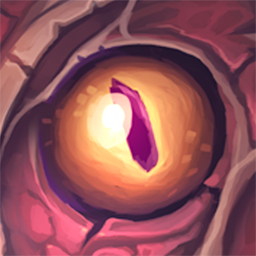Ardor ([ ahr-der ])
Ardor. Fervor. Passion. Many cultures have described these things in many different ways on Aletheia. Pactologistsstill do not agree on when exactly in humanity's rise from apes they began to interest Spirits. Religious argumentation would claim that such an incredibly useful species evolving on parallel is an act of divine providence. A more scientific perspective might claim that it only makes sense that humanity and Spirits would evolve into the most efficient and mutually beneficial relationship.
Whatever the truth may be, the crux of the relationship between the twin species is Ardor; to Spirits, it is an intoxicating source of energy and life; to humans, it is an unavoidable byproduct. Neither can avoid interacting with Ardor, for good or for ill.
Properties
Material Characteristics
Ardor has no physical characteristics itself. Whereas Spirits can touch it, it does not interact physically with almost any other substances. Notable exceptions include highly conductive metals, such as copper and gold, which seem to attract it. Studies into physical interactions with Ardor are ongoing, but difficult due to the necessary participation of Pacted Spirits.
Ardor is described as Spirits as appearing like colored mist that pools around the head and shoulders, with different colors often representing different sources. It can also crystalize when sufficiently dense. Spirits describe individuals in the throws of strong emotion as becoming covered in colored crystals like icicles, emanating from the head and shoulders and spreading away along the body. Although humans cannot interact with Ardor, there are theories that perhaps when this concentrated, they are able to perceive it slightly, resulting in a feeling of being "weighed down" by strong emotion. Much of what causes Ardor to take on certain forms when perceived by a Spirit is still not well understood from a scientific perspective.
Interestingly, the exact perceived coloration can have a lot to do with the individual producing the Ardor. Whereas many produce red colored ardor when they are angry, this is not necessarily so with individuals raised in cultures where red has not been associated with such colors. Such individuals are rare, and indeed, there is a certain limitation imposed on such variance by the base associations many creatures on our planet draw. Dangerous animals and plants are typically brightly colored. Fear and anger, in turn almost always produce brightly colored Ardor.
Physical & Chemical Properties
Ardor can be channeled by a Spirit into producing both metaphysical and physical effects. Engaging a pact with a human being causes this conversion to be made significantly more efficiently, and allows a Spirit to interact more directly with the physical world than normal. This property of Ardor is the cornerstone of Pactology and Ardomancy. By placing oneself into the correct emotional state and making appropriate pacts, an human and Spirit can achieve a great many fantastical feats. Stories and folklore of cunning pacts crowd the history record for precisely this reason.
Origin & Source
Ardor is produced whenever a human being experiences a strong emotion. The only exception to this rule is apathy, which produces no Ardor. Spirits also claim that having an apathetic person nearby in some way tarnishes Ardor in the area, though reports of this are inconsistent enough that most Pactologists disregard these claims as fact and instead classify them as mere opinion or perhaps preference.
Ad
Type
Metaphysical
Odor
dependent on type, source
Taste
dependent on type, source




That is an interesting and fun twist on the prompt, and I love the term 'Pactologist' :D Well done
Creator of Araea, Megacorpolis, and many others.